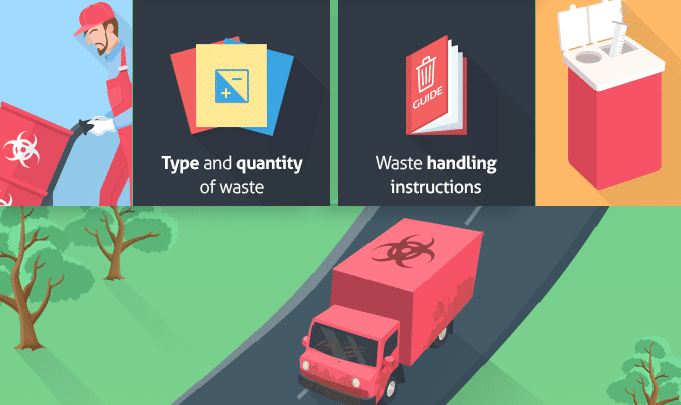Before the 1980’s, the regulations around medical waste disposal were pretty loose. The rise of the AID’s epidemic and news that used syringes were washing up on our shores led to the need to create strict regulations on the disposal of waste that has the potential to spread disease and harm the environment. But just because there are now rules and regulations around medical waste disposal does not mean that there are not additional steps we can take to ensure that these materials are having the least impact on the environment.
Every state has specific laws on medical waste disposal practices and it is important to become familiar with your states unique laws before disposing of any materials. Become familiar with the information the FDA, EPA, and DEA has on medical waste disposal.
Medical waste is loosely defined as any item that comes into contact with body fluids. Items that have been saturated and have more than trace amounts of body fluids need to be properly contained, treated, and disposed of as they carry the potential risk of spreading diseases and viruses.
Sharps are defined as any biohazardous material that has the potential to puncture skin and has been contaminated by bodily fluids. They mainly take the form of used needles or syringes that are used in the treatment of humans and animals. These items present the risk of spreading blood borne pathogens if they are not properly contained. Immediately after use, these items need to be placed in an FDA approved sharps container.
Both of these items should be properly treated and disposed or recycled. There are 2 main paths for the treatment of these materials. They are either taken to an incinerator or an autoclave facility.
The preferred method with the least impact on the environment is having it treated by an autoclave. These devises use pressurized air and steam to sterilize the waste and can be used to treat 90% of medical waste. The waste is then shredded, reducing its volume significantly, and taken to a landfill. One company is taking steps further by taking treated and shredded sharps and creating pellets called PELLA-DRX that can then be used in the construction of roads and buildings.
When looking for a disposal service, make sure to ask questions about the treatment and disposal process. Also, see if your service offers any form of manifest or documentation as proof of destruction.
Here’s another great service for medical clinics: MedPro Disposal offers low-cost, secure medical waste disposal with predictable service and predictable cost. Check out our practice savings calculator here to see how much you could save on your medical waste disposal.
Find Out How Much You Can Save Instantly.
Try our on-line savings calculator.
Let’s shift gears and take a look at unused medications and the impact they present to the environment. Common practice for disposing medications has been to either flush them down the toilet or mix them with coffee grounds and add them to the trash. The aim was to prevent dangerous medications from getting into the wrong hands. However, adding them to your garbage does not guarantee that the drugs won’t be found and ingested, and flushing them down the toilet may be leading to some negative impacts to the environment and aquatic life.
Most of our medications enter waterways through human refuse and the flushing of unused or expired medications. The drugs are not completely absorbed through our bodies which leads to some trace amounts entering the water system. However, by purposely flushing unused medications you are adding much higher concentrated doses to the environment. Many water treatment plants are not capable of removing the chemicals from the water, which results in the chemical compounds and hormones coming in contact with the ecosystem. An Inside Science story wrote about a study that found these trace chemicals were altering the behavior and physical traits of fish which could lead to disruptions in the natural ecosystem.
These chemicals make an appearance again when we consume them in our drinking water. Although there are currently no studies that have found any effects on humans who have consumed these trace amounts found in our water supply, why not take steps to reduce the amounts being added in the first place?
So what can we do? Talk to your local municipality or health department on information for local drop-off programs. The DEA also has authorized collection sites across the country. Visit their site for information on their annual drug take-back days.
If you don’t have easy access in a local take-back program, some companies offer a mail-back program where containers can be shipped to you and then sent back when filled to be properly treated and disposed of. Look for companies that offer some sort of manifest as proof of destruction.
When it comes to medical waste disposal, remember to ask questions about treatment and disposal methods. There are quite a few options at your disposal when it comes to making both a safe and eco-friendly decision. The fish will thank you, and future generations to come will benefit from the steps you take today.



